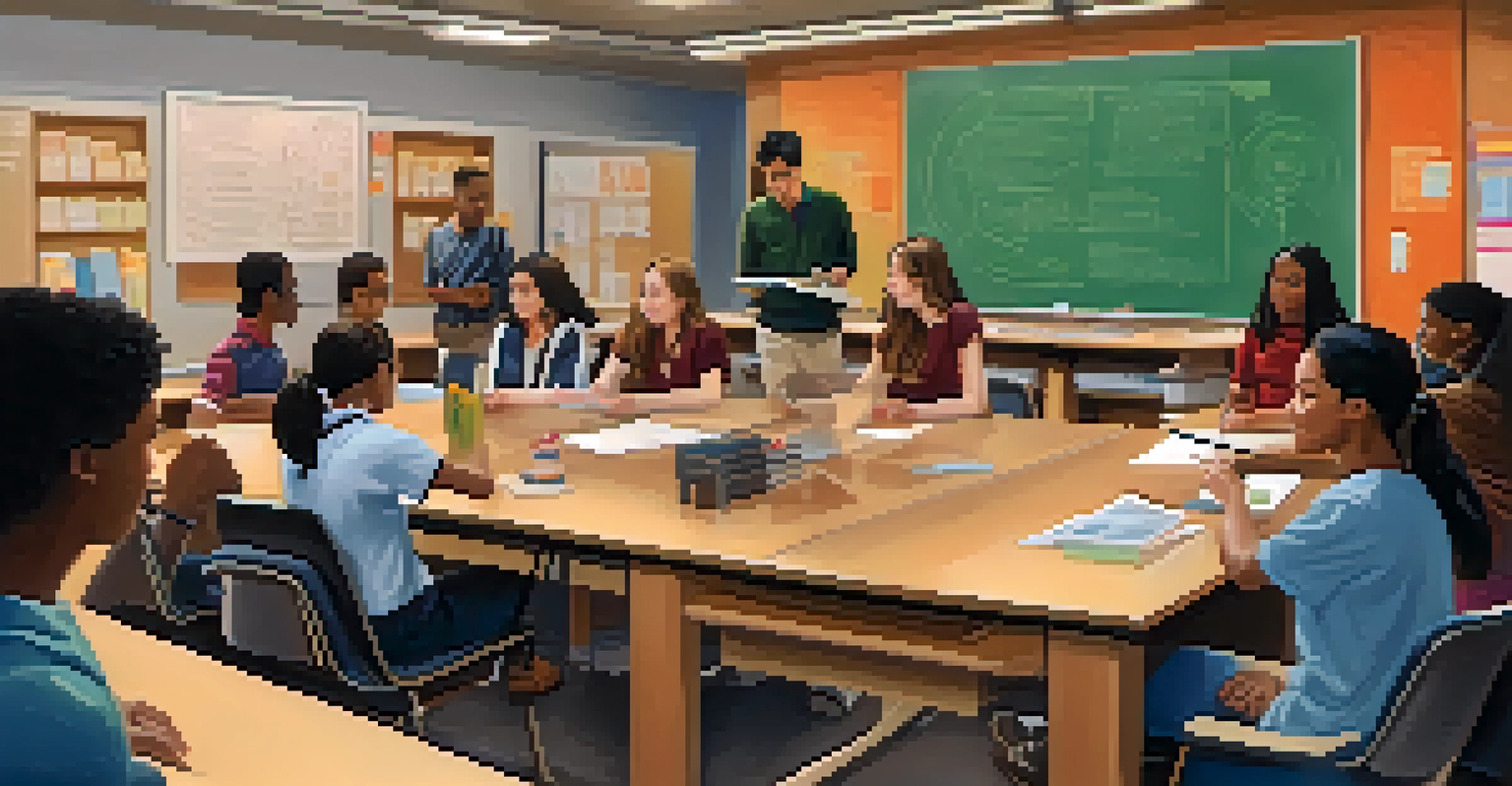Diversity and Inclusion in Rochester's Higher Education

Understanding Diversity and Inclusion in Education
Diversity and inclusion are essential components of modern education. They ensure that individuals from various backgrounds have equal opportunities to succeed. In the context of higher education, this means creating environments where students feel valued and empowered, regardless of their race, gender, or socioeconomic status.
Diversity is not a reason for division; it is a reason for unity.
Rochester's higher education institutions are progressively adopting these principles. By fostering a diverse student body, they enrich the academic experience and prepare students for a global workforce. The goal is not just representation but also creating a culture that embraces different perspectives and ideas.
Inclusion goes hand in hand with diversity, as it focuses on the active participation of all students in campus life. This might involve creating support systems, such as mentorship programs, that address the unique challenges faced by underrepresented groups. Together, these efforts contribute to a more equitable learning environment.
The Current Landscape of Higher Education in Rochester
Rochester is home to several prestigious institutions, each with its unique approach to diversity and inclusion. Universities like the University of Rochester and Rochester Institute of Technology have made significant strides in implementing inclusive policies. They recognize that a diverse student body enhances the educational experience for everyone.

These institutions often conduct assessments to understand their current diversity metrics and identify areas for improvement. By setting clear diversity goals, they can measure progress and hold themselves accountable. This proactive approach is essential in fostering a culture of inclusiveness.
Diversity Enriches Education Experience
A diverse student body enhances the educational experience, preparing students for a global workforce.
Moreover, community initiatives and partnerships with local organizations play a crucial role in promoting higher education accessibility. By collaborating with schools and community groups, Rochester's colleges aim to create pathways for underrepresented students, ensuring that higher education is within reach for all.
Challenges in Achieving Diversity and Inclusion
Despite the progress made, challenges in achieving true diversity and inclusion remain. Many institutions grapple with systemic barriers that hinder underrepresented students from enrolling and succeeding. These barriers can include financial constraints, lack of representation in faculty, and inadequate support services.
Inclusion is not a matter of political correctness. It is the key to growth.
Additionally, implicit biases can affect admissions decisions and classroom dynamics. Awareness and training around these biases are vital for creating an equitable environment. Institutions must actively work to dismantle these barriers and foster a culture of belonging.
However, acknowledging these challenges is the first step towards addressing them. By engaging in open conversations about diversity, colleges can create an environment where all community members feel empowered to contribute to solutions.
Successful Initiatives Promoting Diversity
Many Rochester colleges have launched successful initiatives aimed at promoting diversity and inclusion. Programs such as scholarships for underrepresented students and workshops focused on cultural competency have gained traction. These initiatives not only provide financial assistance but also create an inclusive atmosphere on campus.
For instance, the University of Rochester has established a Diversity and Inclusion Committee that works to implement effective strategies. Their efforts include hosting events that celebrate cultural diversity and facilitate dialogue among students from different backgrounds.
Barriers to Inclusion Persist
Systemic barriers and implicit biases continue to hinder underrepresented students from fully participating in higher education.
Such initiatives also extend beyond the campus. Collaborations with local schools and community organizations help to inspire future generations to pursue higher education, reinforcing the importance of diversity at all educational levels.
The Role of Faculty and Administration
Faculty and administration play a crucial role in fostering diversity and inclusion within higher education. Their commitment to these values can significantly impact student experiences and institutional culture. Training for faculty in culturally responsive teaching methods ensures that all students feel seen and heard in the classroom.
Moreover, diverse hiring practices are vital for creating an inclusive academic environment. By bringing in faculty members from varied backgrounds, institutions can provide rich perspectives that enhance the learning experience for all students.
Administration must also prioritize diversity in strategic planning. By integrating diversity goals into the institution's mission, they signal a commitment to these values at all levels of the organization.
Impact of Student Organizations on Inclusion
Student organizations are vital in promoting diversity and inclusion on campus. These groups create a sense of belonging and provide support networks for students from various backgrounds. By engaging in cultural events and awareness campaigns, they foster a more inclusive campus culture.
For example, organizations that focus on specific cultural or social issues often lead initiatives that educate the broader student body. They provide opportunities for dialogue and understanding, which is essential in breaking down stereotypes and fostering empathy.
Collaborative Initiatives Drive Change
Successful programs and community partnerships are essential for promoting diversity and inclusion within Rochester's colleges.
Moreover, student organizations often collaborate with administration to influence policy changes. Their voices are crucial in advocating for the needs and concerns of underrepresented groups, ensuring that the institution remains responsive to its diverse community.
Future Directions for Diversity and Inclusion
Looking ahead, Rochester's higher education institutions must continue to evolve in their approach to diversity and inclusion. This involves not only maintaining current initiatives but also exploring new strategies that address emerging challenges. Continuous assessment and adaptation are key to meeting the needs of a diverse student population.
Engagement with students, faculty, and the community is vital in shaping future policies. By soliciting feedback and fostering collaborative environments, institutions can create a more inclusive atmosphere that reflects the values of their community.

Ultimately, the journey toward diversity and inclusion is ongoing. With a collective commitment from all stakeholders, Rochester can become a model for inclusive higher education, benefiting both the academic community and the broader society.